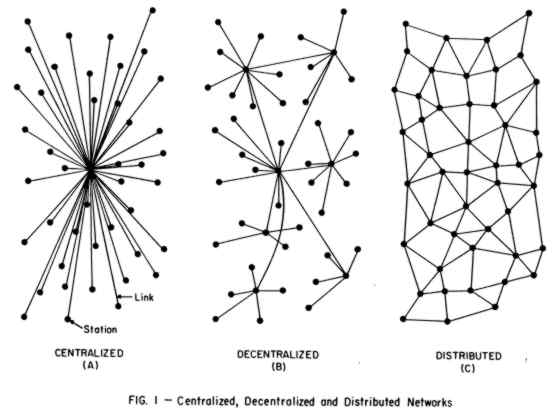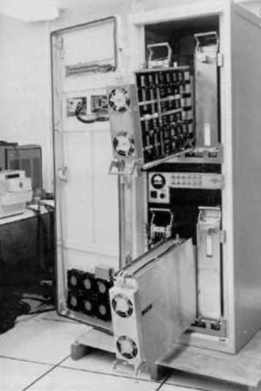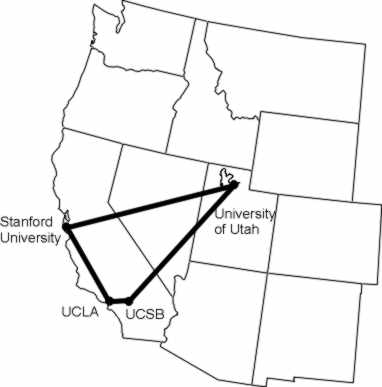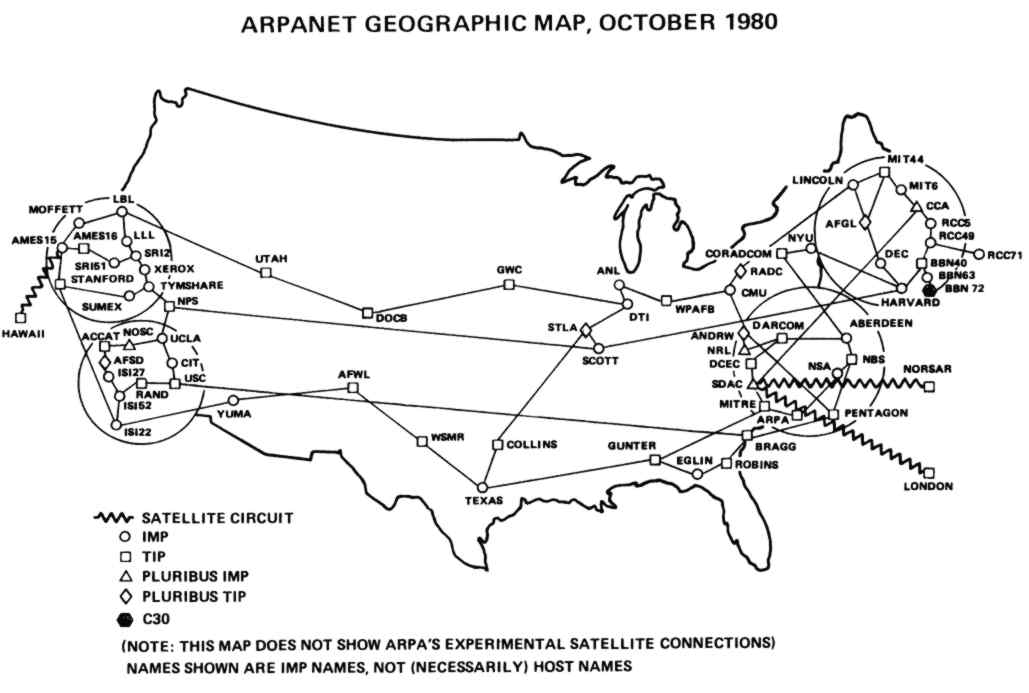| The Early History of the Internet |
| Written by Historian | |||
Page 1 of 2
It is difficult to understand what was so hard about thinking up the Internet. It seems like such an obvious idea to us. Of course it wasn’t so easy without perfect hindsight and even if you knew that you wanted to create the Internet the technology available would have made it far more difficult than you would believe. However, this said there are some quite surprising turns of events in the development of the Internet. The Internet as we know it today was born out of the cold war between the USA and the USSR. Back in those days there was a very real fear that there would be nuclear war between the superpowers and the US military decided that it needed to find a way to keep its lines of communication open during an exchange of nuclear devices. In 1961 Leonard Kleinrock at MIT wote a paper, it was his PhD thesis proposal, on the new idea of packet switching. The idea had also been thought of by the “think tank” at the RAND Corporation. The final eleven-volume report submitted by Paul Baran of RAND was turned down as a proposal to build a network but the idea wasn’t dead. In the UK's National Physical Labaratory (NPL) Donald Davies was also working independently on the same idea and it was there that the term “packet” was first adopted. Paul Baran's sketches for possible net topologies
The whole basis of the Internet is “packet switching” and this is the reliable communications technique that was supposed to survive a nuclear strike. In a non-packet switched network a direct connection is made between the two communicating points. This link is used to transmit data directly between the two sites. The traditional phone system or POTS – Plain Old Telephone System – works in exactly this way. When John wants to phone his friend Jane he dials the number and the old mechanical switches connect the piece of wire in his phone to the wire in John’s phone. If Jane decided to pull on the phone cable then, in principle at least, she could yank the phone out of John’s hands! Modern digital systems don’t have mechanical switches but they make the same “point to point” type of connection. If a nuclear bomb dropped between john and jane and wiped out the wire between the two of them, that would be the end of their communications. (Really modern phone networks tend to use packet switching, i.e. they work like the internet does, and this example is really based on the way things were before the internet!) In a packet-switched network the data is first formatted into small chunks – or “packets” – and the address of the destination machine is added. The packet is then sent onto the network and is picked up by the next machine. It is then retransmitted onto another segment of the network and so on. The address in the packet is used to route it between the machines on the network so that it eventually reaches its destination – hence “packet switching”. The advantage of this set-up is that if the link between a pair of machines is broken the packet can still reach its destination by being routed a different way. It also allows point-to-point communication between any two machines on the network, even if there isn’t a direct connection between them. This is the idea that the RAND team came up with and they did the maths to prove that if the network was big enough and there were enough alternative routes through it between any two machines then it was virtually impossible to destroy the communications between a significant number of nodes, short of destroying the whole network. The RAND study concerned a voice-based network but the same ideas applied to a network connecting computers. Lawrence G. Roberts, a researcher at MIT had already built a small two-computer system based on Kleinrock’s ideas between MIT and SRL. The first login, as recalled by Roberts, will be very familiar to any computer user: "We set up a telephone connection between us and the guys at SRI...," "We typed the L and we asked on the phone, "Do you see the L?" "Yes, we see the L," came the response. "We typed the O, and we asked, "Do you see the O." "Yes, we see the O." "Then we typed the G, and the system crashed"... ARPANETIn 1966 Roberts joined ARPA, the Advanced Research Projects Agency, to build a big computer network using packet switching – the ARPANET. In 1968 the ideas were refined to the point where actual equipment was needed and BBN, Bolt, Beranek and Newman, were brought in to design the packet switches – the Interface Message Processors or IMPs.
An IMP - an early router! The IMPs were small computers in their own right and were to be added to existing mainframe machines to create the network. The first IMP was installed at UCLA in Kleinrock’s lab and on October 29 1969 an ARPANET communication was first established this node and one at Douglas Engelbart's lab at the Stanford Research Institute (SRI). By December 5, 1969, the initial 4-node network also encompassing the University of California at Santa Barbara and the University of Utah was connected. This was the start of what was to become the Internet.
From small acorns … 1972 was the start of the second phase of the Internet and at this pont ARPANET grew from four machines in 1969 to 40 in 1972. TCP/IPIn October 1972 Bob Kahn organized the first public demonstration of the ARPANET at the International Computer Communication Conference (ICCC). But perhaps more importantly this was the year that the first email was sent. In March Ray Tomlinson at BBN wrote the basic email message send and read software, motivated by the need of the ARPANET developers for an easy coordination mechanism. In July, Roberts expanded its utility by writing the first email utility program to list, selectively read, file, forward, and respond to messages. A year later the first international connections to the ARPANET were added, to the UK and Norway. The problem was that the ARPANET wasn’t yet the Internet we know and love. The interconnections didn’t really have the flexibility needed to allow networks to be connected together- i.e. to be an “inter”-net. It was more like a large Wide area network that machines, rather than their local networks could connect to. The man who first realised the need for an “open architecture” was Bob Kahn of BBN. Each network would look after its own internal workings and black boxes called “gateways” would deal with passing packets between the networks. There would be no global control or error recovery provided by the gateways. At the start of 1973 Kahn asked Vinton Cerf, then a researcher at Stanford, to work with him on the detailed design of a protocol. Cerf had been involved in the design of the initial ARPANET’s original protocol. What they created and issued as a specification in 1974 we now call TCP/IP. It took almost ten years before the ARPANET was ready to switch over to TCP/IP. On January 1st 1983 the whole of the ARPANET changed to TCP/IP and any hosts who didn’t make the change were left out in the cold. At the same time the military sites on the ARPANET took the opportunity to split off and merge with the new Defence network to become MILNET. In the same year the Domain Name Server (DNS) was developed at the University of Wisconsin. This allowed users to refer to sites by name and became the largest distributed database ever. By the following year DNS was introduced to the network and it had over 1000 hosts – small by today’s standards.
ARPANET in 1980
<ASIN: 0743468376> <ASIN:0393333949> <ASIN:075381093X> <ASIN:1573980005> |
|||
| Last Updated ( Monday, 31 December 2018 ) |




